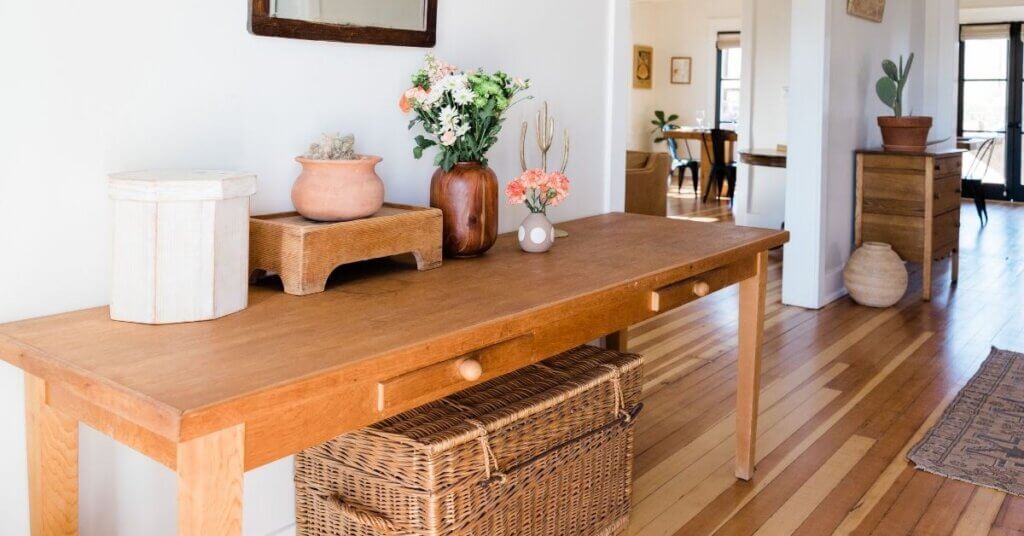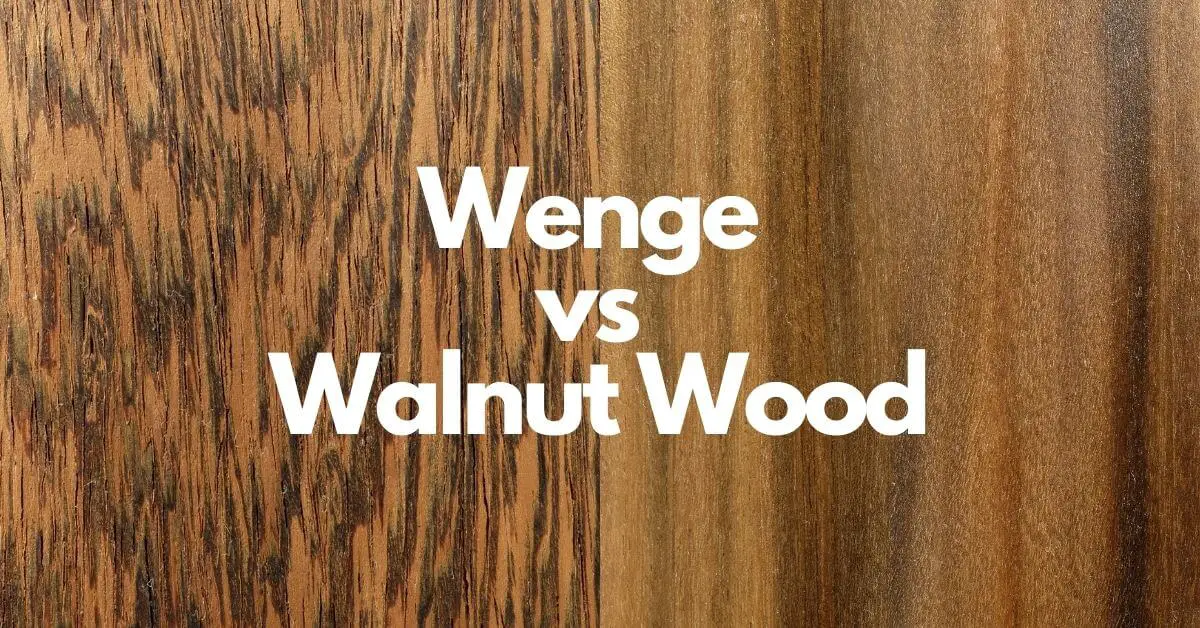Wenge wood
Wenge wood(Millettia laurentii) is known for its high density, durability, natural color, and rot-resistant properties. It is a versatile wood that is used for many purposes. Wenge wood is an excellent choice for any interior and exterior project, widely used for flooring and musical instruments.
Wenge wood is also known as faux Ebony, Dikela, Mibotu, Bokonge, and Awong. It is native to central Africa. It is a very rare and expensive hardwood.
Wenge is a small to medium-sized tree, The tree can be 60–90 feet (18–27 m) in length and 3–4 feet (1–1.2 m) in trunk diameter. Wenge tree species can be evergreen and semi-deciduous and are found in open forests.
Walnut wood
Walnut wood is used for making high-quality, durable, and beautiful floors and furniture. It is very hard and durable, So it is suitable for indoor projects. It has many natural properties, Which makes it special from other hardwoods.
There are about 21 species of walnut, and almost all of them are valuable and expensive. These species are used on the basis of their properties. Some famous species are black walnut, English Walnut, Claro Walnut, Peruvian Walnut, and more.
Walnut is deciduous trees that grow about 33–131 ft (10–40 meters).
| # | Wenge Wood | Walnut Wood |
| Scientific Name | Millettia laurentii | Juglans |
| Tree size | 60-90 ft (18-27 m) tall, 3-4 ft (1-1.2 m) trunk diameter | 30-130 ft (20-30 m) tall |
| Average Dried Weight | 54 lbs/ft3 (870 kg/m3) | 38 lbs/ft3 (610 kg/m3) (Black walnut) |
| Janka Hardness | 1,930 lbf (8,600 N) | 910 to 1670 lbf |
| Wood color | Medium brown to yellowish | light brown to a dark chocolate |
| Rot Resistance | resistant to termite attack | Very durable in terms of decay resistance |
| Workability | Overall good | Generally, Easy to work. |
| Odor | The slightly bitter scent when being worked | Faint, mild odor when being worked. |
| Type | Hardwood | Hardwood |
| Uses | Veneer, paneling, furniture, turned objects, and musical instruments. | Furniture, cabinetry, gunstocks, veneers sheet, turned objects, etc. |
Common uses of Wenge wood and Walnut Wood

Wenge and walnut hardwood are strong and durable and widely used for making quality furniture, cabinets, and floors.
Wenge wood can be used for indoor and outdoor furniture because it has good termite and rot-resistant properties. Whereas walnut wood is only suitable for indoor use.
Wenge and Walnut Wood have sufficient hardness to make them suitable for hardwood flooring. Because it is less prone to dents and scratches. Another great reason to use it for flooring is its deep natural color and grain pattern that look very attractive to everyone.
Wenge wood uses
Wenge wood is great tonewood, generally used for acoustic bodies and guitar necks. Wenge is a good wood for turnery.
Wenge is a hardwood with an open grain, it is considered good tonewood. Because wenge wood offers a relatively bright tone with superb mid-range and a resonant low-end.
Walnut wood uses
Walnut hardwood is strong and excellent shock-resistant hardwood, so it can be an excellent choice for gunstocks and tool handles. Black walnut is also used for interior paneling and veneer.
Another use of walnut wood is small wooden objects and novelties. Walnut wood is hard but it is good for carving and the best for turning. These wooden objects look beautiful after finishing. Their market demand is high.
Wenge vs Walnut Wood Color
Wenge wood color
The heartwood (wood that is at the center of a tree) is medium brown to reddish or yellowish in hue, with nearly black streaks and the sapwood (wood that is at the outer of a tree) is almost white.
The heartwood can lighten (rather than darken) with age. Exposure to sunlight makes this process even faster.
Wenge wood has a straight grain, with a very coarse texture. Low natural luster.
Walnut wood color
Black Walnut heartwood is light brown to a dark chocolate brown with darker brown streaks while the sapwood is pale yellow-gray to nearly white. There may be a gray, purple, or reddish cast in the heartwood.
Usually, the grain is straight but can be irregular with a medium texture and moderate natural luster.
Which wood is harder?
Wenge wood is harder than walnut wood. Wenge wood’s Janka hardness is 1,930 lbf (8,600 N) while walnut varies from 910 to 1670 lbf depending on the species.
The Janka hardness of the Walnut species is as follows.
| Walnut species | Janka Hardness in lbf |
| Queensland Walnut | 1,670 lbf (7,380 N) |
| Bastogne Walnut | 1,250 lbf (5,560 N) |
| English Walnut | 1,220 lbf (5,410 N) |
| Claro Walnut | 1,130 lbf (5,030 N) |
| Black Walnut | 1,010 lbf (4,490 N) |
| Peruvian Walnut | 960 lbf (4,250 N) |
| African Walnut | 940 lbf (4,180 N) |
| New Guinea Walnut | 910 lbf (4,040 N) |
Which wood is more durable and rot resistant?
Wenge wood is very durable and It is naturally resistant to abrasion, rot, and termite attack. So wenge wood is preferred for indoor and outdoor construction.
Most species of walnut are very durable in terms of decay resistance but are also susceptible to insect attack. It is also not good rot resistant.
In general, hardwoods are more durable than softwoods but hardwoods also require a varnish clear coat with UV protection every 1-2 years.
Wenge vs Walnut Wood Workability
Wenge wood is very hard, So working with Wenge wood is not as easy as walnuts. Blunt tool edges are a common problem. Wenge wood has large open pores so it is very difficult to get perfect smooth finishing.
Usually, walnuts can be easy to work with hand and machine tools. But there may be problems due to irregular or figured grain. Glues, stains, and finishes well, walnut wood responds well to steam bending.
Wenge and walnut wood can remain in their natural tone. It looks very attractive even without stains. But you can also stain them. After staining it becomes very dark, it looks almost black.
Pricing
Wenge wood is available in wide sizes and veneer sheets. But its price is very high. Its price ranges from $25 to $30 per board foot
Walnut is also available in a wide range and prices are in the high range for a domestic species.
By the way, the price of any wood depends on many things. Such as the quality of wood or grade and the growth rate of the tree.
You can get a cheaper deal by buying the wood from its original place.
Allergies/Toxicity:
No serious problems have been noted in working with wenge and walnut hardwood. But wood dust can affect you, usually, the most common reactions simply include eye and skin irritation. So use protective equipment while woodworking: dust mask, goggles, etc.


